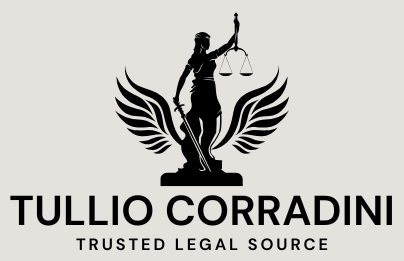Trademark oppositions are proceedings by which events can formally request the refusal of another party’s trademark software. They are a characteristic of the trademark laws of just about each and every state, together with China and the United States. However trademark oppositions provide the exact objective in the two China and the United States, the contexts in which they are employed differ noticeably.
1. China Trademark Oppositions
When it evaluations an software to register a trademark, the China Countrywide Intellectual Home Administration (CNIPA) will “publish” the trademark. Then there follows a three-month interval during which oppositions can be submitted.
A trademark opposition need to be based mostly on specific legal grounds, which are specified in Posting 33 of the Trademark Regulation. Particular grounds can only be invoked by a “holder of prior legal rights or an interested party”, when other individuals can be invoked by any party. For instance, think about that an software is filed to sign-up the trademark STARSUCKS, in connection with espresso shop companies. Only the Starbucks Corporation could oppose this trademark on the grounds that it is identical to just one or additional of its registered logos. Having said that, any bash could oppose the registration of STARSUCKS on the grounds that it is misleading and could mislead consumers into assuming a relationship amongst this trademark and the serious Starbucks.
When an opposition is filed, CNIPA will take into consideration its merits. It may decide to aspect with the opposing occasion and deny registration of the trademark that is currently being opposed, or it might decide to enable the registration to continue.
In our working experience, trademark programs by international manufacturers are rarely opposed. This is in portion a end result of the way CNIPA reviews trademark applications. When reviewing a trademark application, CNIPA lookups China’s trademark registry to recognize any emblems that are similar or similar to the just one staying utilized for. If it finds any equivalent or very similar logos, it will refuse the trademark application, citing the conflicting emblems.
CNIPA usually takes an expansive method when determining if two trademarks are similar when confronted with borderline situations, CNIPA will generally locate that similarity exists. As a end result, CNIPA preempts most likely oppositions, by nixing most trademark programs that could likely be of issue to any other parties simply because the used-for trademark is identical to their very own emblems. The flip side of CNIPA’s set off-joyful method is that it will typically refuse apps for emblems that are not definitely that very similar to the cited logos — but that is a matter for an additional working day.
Even though overseas makes are not often on the obtaining stop of trademark oppositions in China, they often avail themselves of opposition proceedings to counter problematic trademark programs by other get-togethers. Under China’s to start with-to-file system, somebody who registers a trademark will have remarkable legal rights to the trademark than someone who used the trademark earlier but did not register it. This helps make China’s trademark procedure vulnerable to bad-religion actors, this sort of as trademark “squatters” who sign-up logos in the hopes that the authentic house owners of the emblems will pay back a ransom for them. The Chinese authorities are more and more cracking down on trademark squatting, but there are also pitfalls from counterfeiters, competition, and unscrupulous business partners.
For counterfeiters, registering a trademark implies that, lawfully, their solutions are not deemed bogus in China. In the meantime, brand names may perhaps be prevented from registering their logos by lousy-religion competitors that defeat them to it. With a trademark registration received in undesirable faith, the competitor could also request to block the export of merchandise bearing the trademark. Undesirable-religion trademark registrations can also be made use of as leverage to prevent models from on the lookout for other suppliers or promoting partners.
This condition of affairs can make it primarily for model house owners in the China marketplace to continuously be on the lookout for lousy-religion programs. And if they grow to be aware that a terrible-faith software has been submitted, the timely filing of a trademark opposition will be the initial shot they get at derailing that undesirable-faith application.
The trademark opposition method in China is somewhat basic. After the opposition is filed, the trademark applicant has 30 times to answer. The functions then have an added 3 months to submit added evidence right after their preliminary filings, which can be a lifesaver for models that discover out about a trademark software they want to oppose in the remaining days of the opposition period of time. Soon after the proof is submitted, there is no require for more motion by both party. By legislation, CNIPA need to make a decision in 12 months of the conclude of the opposition period of time.
To study extra about China trademark oppositions, test out China Trademark Oppositions: They Do the job!
2. United States Trademark Oppositions
The opposition time period in the United States is one thirty day period, indicating get-togethers have considerably less time than in China to mount an opposition challenge. Time extensions can be asked for, and these are generally lifesavers for manufacturers that uncover out about an software in the waning times of the opposition interval.
Bringing a trademark opposition in the United States is significantly more concerned and costlier than in China. In quite a few ways, the approach is similar to frequent litigation, with equally functions expected to make quite a few submissions. Get-togethers may possibly also interact in discovery.
Fortuitously, it is significantly less very likely that a model will want to file an opposition in the United States, as as opposed to China. For one particular, a trademark will not be registered by USPTO except if it in latest use, generating trademark squatting and other negative-religion methods much less productive (if at all helpful). Moreover, US trademark law affords top-quality legal rights to the social gathering that initial makes use of a trademark, not to the celebration that 1st registers it. Whilst it may be a problem for a social gathering employing an unregistered trademark to see off a problem from a party that makes an attempt to sign up that exact trademark, conceptually the law is on the aspect of the previously person.
In the meantime, as is the case in China, USPTO examiners search the trademark registry to obtain possibly conflicting trademarks. And like their Chinese counterparts, USPTO examiners have a tendency to be liberal when it comes to figuring out if chance of confusion exists amongst logos. As these kinds of, USPTO will frequently choose care of any trademark application that could raise issues on the element of a brand name with registered trademark legal rights, obviating the will need for trademark oppositions in most instances.
For the reasons explained earlier mentioned, manufacturers are considerably fewer probable to come across trademark apps that depict an existential threat that tends to make a trademark opposition a requirement. Usually, trademark oppositions in the United States are submitted by huge brands that undertake a maximalist method to model security and have the deep pockets for it.
In a long run post, we will assess trademark oppositions in China to those people in the European Union.











More Stories
Navigating Tax Complexities: The Indispensable Role of Tax Lawyers
Unlocking Business Success: The Role of Corporate Attorneys
Deadline Approaching: Form I-9 Virtual Inspection of Employment Authorization and Identity Documents will End on July 31, 2023